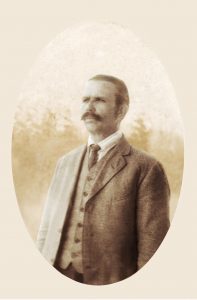
Department of Historic ResourcesAn official website of the Commonwealth of Virginia Here's how you knowAn official websiteHere's how you know

Department of Historic ResourcesAn official website of the Commonwealth of Virginia Here's how you knowAn official websiteHere's how you know

—For many decades during the 20th century, Spotsylvania had only one public high school for African American students, named eventually for local educator John J. Wright—
A state historical marker issued by DHR will be dedicated later this month that highlights the 20th-century history of secondary public school education for African American students in Spotsylvania County and John J. Wright High School. The dedication and unveiling ceremony for the marker will be held October 26, beginning at 10 a.m., at the John J. Wright Educational and Cultural Center, located at 7565 Courthouse Road, Spotsylvania Courthouse (22551). Speakers during the ceremony will include John Hennessy, chief historian at Fredericksburg and Spotsylvania National Military Park; Dr. Scott Baker, Superintendent, Spotsylvania County Schools; Charles Conyers, who served as principal at John J. Wright before integration; . . . . . .Dr. Jennifer Loux, historian and manager of the marker program at DHR, and other participants including former students and faculty of Wright school. Musical selections during the ceremony will be provided by the Brotherhood Chorus of Sylvannah Baptist Church in Spotsylvania. The mission of securing public secondary education for African American students in Spotsylvania County was initially undertaken by the Spotsylvania Sunday School Union, which was organized by representatives of African American county churches in 1905. Led by educator John J. Wright, the Union purchased 158.5 acres in 1910, later deeding 20 acres to the county for a school to replace a school building that had burned down. In 1913, the Snell Training School opened, according to the new marker, “and was for decades the county’s only public high school for black students” In 1940, the school was renamed for John J. Wright. After the building burned in 1941, the school was rebuilt in 1952. It became a middle school in 1968 after desegregation was completed, and in 2008 the building was renovated and re-opened as the John J. Wright Educational and Cultural Center, the marker relays. The “John J. Wright School” marker was approved for manufacture and installation earlier this year by the Virginia Board of Historic Resources, which has the authority to approve new historical markers. The costs of the marker were funded by the John J. Wright Museum, Spotsylvania Sunday School Union, Spotsylvania Branch of the NAACP and private donors. With the addition of this sign, three markers in Spotsylvania County address topics in African American history. Virginia’s historical highway marker program, which began in 1927 with the installation of the first historical markers along U.S. Route 1, is considered the oldest such program in the nation. Currently, there are more than 2,600 official state markers, most maintained by the Virginia Department of Transportation and by local partners in jurisdictions outside of VDOT’s authority. [PLEASE NOTE: DHR markers are erected not to “honor” their subjects but rather to educate and inform the public about a person, place, or event of regional, state, or national importance. In this regard, markers are not memorials.] Text of marker:John J. Wright School
Representatives from local African American churches organized the Spotsylvania Sunday School Union in 1905 to secure a secondary school for black children. The Union, led by educator John J. Wright, purchased 158.5 acres here in 1910 and later deeded 20 acres to the county. The Snell Training School, built by Alfred Fairchild, opened here in 1913 and was for decades the county’s only public high school for black students. Renamed for John J. Wright in 1940, it burned in 1941 and was rebuilt in 1952. The building became a middle school in 1968 after desegregation was completed. In 2008, after a major renovation, the building was designated the John J. Wright Educational and Cultural Center.Programs
DHR has stimulated more than $4.2 billion dollars in private investments related to historic tax credit incentives, revitalizing communities of all sizes throughout Virginia
DHR has secured permanent legal protection for over 700 historic places - including 15,000 acres of battlefield lands
DHR has erected 2,532 highway markers in every county and city across Virginia
DHR has registered more than 3,317 individual resources and 613 historic districts
DHR has engaged over 450 students in 3 highway marker contests
DHR has stimulated more than $4.2 billion dollars in private investments related to historic tax credit incentives, revitalizing communities of all sizes throughout Virginia
DHR has secured permanent legal protection for over 700 historic places - including 15,000 acres of battlefield lands
DHR has erected 2,532 highway markers in every county and city across Virginia
DHR has registered more than 3,317 individual resources and 613 historic districts
DHR has engaged over 450 students in 3 highway marker contests
DHR has stimulated more than $4.2 billion dollars in private investments related to historic tax credit incentives, revitalizing communities of all sizes throughout Virginia